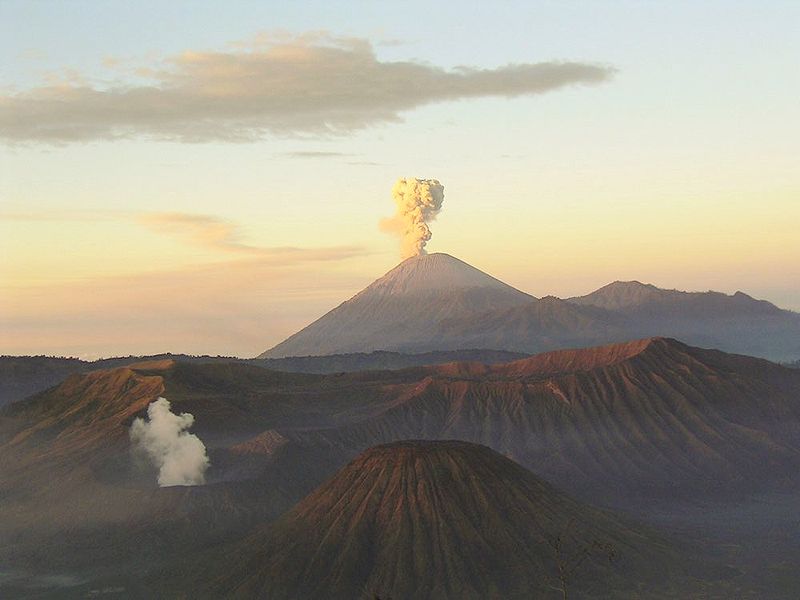There’s a fascinating theory in paleoclimate circles called Snowball Earth. A change in climate, possibly started in whole or in part by increasing free oxygen in the atmosphere and a reduction in CO2, created an ice age on steroids. An ancient earth covered from poles to equator in ice is one extreme possible outcome, but there’s one big headache: earth would never-never get out of it! Snow and ice are so reflective that our planet would stay encased, frigid and frozen, to this day. That’s where a new idea rides to the rescue …
A full-blown snowball earth would have little in the way of weather, but geological process would continue unabated. Greenhouse gases from surface volcanoes and undersea events would still be emitted, and without much in the way of rain storms or biology to remove them, they might build up until the ambient temperature in the tropics exceeded the freezing point of water. Once that happens the ice starts receding, big leads of equatorial water open up, dark water absorbs more sunlight raising the temperature further. Computer models suggest that once the air begins to hold reasonable amounts of another potent greenhouse gas, water vapor, the process runs away fast. The temperature could soar a hundred degrees world-wide in less than a century! So long snowball earth, say hello to steamy hypercyclonic storm world.
The fly in the ointment in that scenario is the initial CO2 build up that triggers the tropical melt. Geochemical evidence found to date shows it falls short of the critical tipping point. Oh no, our snowball earth can’t ever warm up!
Abstract Link — Previous modeling research found that to thaw out a glacier that covered the planet would require carbon dioxide to account for up to 20 percent of the atmosphere by volume. Paleogeochemical evidence, however, shows that carbon dioxide levels reached only 1 percent to 10 percent. The model used for the earlier research, the authors find, ignored the warming potential of clouds. Clouds not only trap infrared radiation near Earth’s surface, warming the planet, but also reflect incoming sunlight, cooling the planet. In the modern climate, both effects are important. However, set against a planet encompassed in ice, clouds’ reflectivity becomes less important, and the overall effect of clouds is to warm the planet. By accounting for the heat-trapping effects of clouds, the authors find that the atmospheric carbon dioxide concentration required to drive deglaciation is 10-100 times lower than previous research suggested, a concentration that fits within observed levels.
This is how real science works, models beocme increasingly sophisticated spiced up with aha moments. Ain’t science grand?


I’ve almost finished “The Story of Earth” by Robert Hazen.
There’s a chapter on this topic. He is dubious that the ice went all the way to the equator.
Even if the science isn’t settled, I’ve found the book quite fascinating. I don’t think I clearly understood before that animal life in the seas (almost certainly) preceded plant life on land. And I know I was very fuzzy on how life and minerals co-evolved.
I have very little post-high school science education except for lots of reading. I found Hazen’s book to be an excellent, high-level overview of the earth’s history.
And I’d be curious if anyone has a critique of it.
I haven’t read Hazen’s book, I might check it out though. The researchers I’ve talked to about this say the evidence for ice at the equator is a bit sparse but reasonably good in quality, fits the time and place, etc.
I didn’t think this was a new idea at all. I remember the talk about geologic processes probably being the cause of the ‘breakout’ from the snowball scenario, at least as long as a couple years ago on the Science channel.
I wonder what this means relative to our current climate change. I expect it isn’t positive.